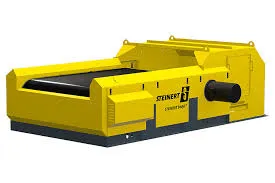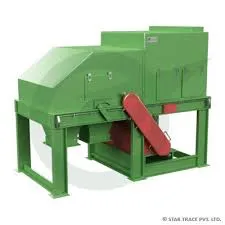

Tem . 08, 2025 08:42 Back to list

(mobile industrial shredder)
The industrial waste management landscape is transforming rapidly, driven by the pressing need for efficient material handling and sustainable practices. At the center of this evolution is the mobile industrial shredder
, an innovative solution designed to meet complex challenges in scrap metal processing, construction debris reduction, and other recycling needs across industries. Data from Global Market Insights indicate that the global industrial shredder market surpassed USD 900 million in 2023 and is projected to register over 5% CAGR through 2030, with mobile models accounting for a burgeoning share due to their unmatched portability and energy-saving designs. Unlike stationary units, mobile industrial shredders provide flexibility for on-site operations, reducing transportation costs and environmental impact. This overview will explore the critical technological advantages, manufacturer landscape, customization strategies, and real-world applications that make mobile industrial shredders indispensable for modern businesses.
Advancements in shredder technology have exponentially increased the reliability and efficiency of mobile scrap metal shredders. Rotor speed variability, hydraulic drive systems, and integrated sorting capabilities are now standard features among top-tier models. For example, high-torque, low-speed rotors minimize wear and maximize throughput, processing up to 30 tons/hour of scrap metal with greater energy efficiency. Advanced dust suppression systems ensure compliance with environmental regulations, while robust steel housing protects machinery on rugged worksites.
Among mobile construction debris shredder models, features such as remote diagnostics and automatic overload protection dramatically reduce downtime. Modular screens and customizable teeth profiles enable precise output sizing, adapting quickly to varying waste streams. Another standout technological edge is the adoption of IoT (Internet of Things) interfaces, allowing operators to monitor performance KPIs remotely, schedule predictive maintenance, and minimize total cost of ownership. With integration of telematics and cloud-based monitoring, businesses achieve uptime improvements of up to 20% and significant operational transparency, commands essential for maximizing ROI.
To make informed investment decisions, buyers must benchmark the leading manufacturers in the mobile industrial shredder segment. Below is a comparative data table of key features from leading providers:
| Manufacturer | Model | Engine Power (kW) | Throughput (tons/hour) | Mobility | Cutting Technology | Customization Options |
|---|---|---|---|---|---|---|
| UNTHA | XR3000 Mobil-e | 320 | 30 | Tracked Chassis | Low-Speed, High-Torque | Screen Sizing, Teeth Profiles |
| Hammel | VB 950 DK | 405 | 40 | Crawler/Trailer | Duo-Shaft, Reversible | Hydraulic Adjustments |
| Arjes | Impaktor 250 EVO | 129 | 14 | Trailer/Tracked | Slow-Speed, Twin-Shaft | Interchangeable Shafts |
| Terex Ecotec | TDS 820 | 275 | 20 | Tracked | High-Torque, Twin Shaft | Remote Control, Screens |
UNTHA’s XR3000 Mobil-e delivers great versatility for a broad spectrum of industrial applications, while Hammel’s VB series demonstrates unmatched throughput for heavy-duty scrap requirements. Terex Ecotec prioritizes operational flexibility, and Arjes specializes in compact, modular solutions. These key competitors collectively drive market innovation, each appealing to distinct sectors and operational scales.
Selecting the ideal mobile industrial shredder requires a strategic assessment of input material types, output sizing requirements, and operational constraints. Businesses dealing with higher scrap volumes should prioritize throughput and shaft durability, while those processing mixed construction debris benefit from modular design and adaptable screens. Power source (diesel vs. electric), transportation ease, and operator training are critical differentiators.
Customization extends beyond equipment hardware. Modern providers offer flexible financing, data integration with ERP systems, and ongoing technical support. For metal recycling firms, anti-wear components and heavy-duty cutting teeth drastically extend service intervals. For construction firms, rapid mobility through tracked chassis and remote operational capabilities reduce operational bottlenecks.
The cost of ownership is often offset within the first three years through reduced landfill costs, resale of high-purity scrap, and drastically lower labor intensiveness. On average, businesses using highly customizable shredders report a 30–40% increase in recycling throughput and measurable reductions in carbon footprint. Sourcing from a vendor offering post-sale consultation is key to unlocking these advantages and futureproofing material processing lines.
Actual deployments of mobile construction debris shredders and mobile scrap metal shredders demonstrate the tangible value delivered across sectors.
CASE STUDY 1 – URBAN DEMOLITION SITE: An international civil engineering firm equipped several demolition teams each with a state-of-the-art tracked shredder. By processing over 20,000 tons of mixed construction waste annually on-site, they achieved landfill diversion rates above 85% and reduced transportation costs by 60%. The sorted output fed directly into new raw materials production, supporting a closed-loop sustainability model and earning local environmental awards.
CASE STUDY 2 – REGIONAL METAL RECYCLING PLANT: A European scrap metal processor deployed a mobile industrial shredder with remote diagnostics, processing up to 1000 tons of ferrous and non-ferrous metals monthly. The plant reported a 25% reduction in energy consumption due to the shredder's efficient hydraulic system and achieved nearly zero downtime due to predictive maintenance. High-purity shredded metal commanded premium resale prices.
These examples underscore the robust return on investment, operational efficiency, and sustainability gains available to forward-thinking businesses that embrace the latest in mobile shredding technology. Success stems from close collaboration between end users and vendors to tailor configurations for unique use cases and throughput goals.
Emerging trends promise continued evolution in mobile industrial shredder capabilities. Electrification is rising in prominence, as electric drive systems demonstrate improved energy efficiency, quieter operation, and adherence to tightening emissions regulations, particularly in Europe and North America.
The development of blade materials, leveraging advanced alloys and ceramic coatings, is significantly extending service intervals and reducing maintenance costs. AI-enabled particle sizing sensors and automated sorting are enhancing product purity and throughput. Telematics are unlocking holistic fleet management, facilitating predictive maintenance schedules, and optimizing equipment allocation across multiple sites.
The next stage of innovation will likely see hybrid drive systems, fully autonomous operation, and even integration with carbon capture modules for industries facing aggressive decarbonization targets. As urban density increases and environmental regulations tighten, companies increasingly look to mobile, modular shredding technologies to reduce on-road transport requirements and maximize resource utilization.
The adoption of a mobile industrial shredder is more than an upgrade; it is a strategic move that unlocks new levels of efficiency, sustainability, and operational flexibility for modern industrial operations. Across construction, demolition, and scrap metal recycling, businesses are capitalizing on expanded throughput, significant cost reductions, and compliance with evolving environmental mandates. With ongoing innovation in drive systems, automation, and connectivity, the era of mobile shredding technology is only gaining momentum. As market leaders continue to innovate and offer deeper customization, organizations investing now secure a technical edge and competitive resilience that will shape the next decade of material processing.

(mobile industrial shredder)
Latest news
Troubleshooting Common Eddy Separator Problems
NewsJul.04,2025
The Role of Metal Recycling Plants in Circular Economy
NewsJul.04,2025
The Impact of Recycling Line Pickers on Waste Management Costs
NewsJul.04,2025
Safety Features Every Metal Shredder Should Have
NewsJul.04,2025
How Industrial Shredders Improve Waste Management Systems
NewsJul.04,2025
How Cable Granulators Contribute to Sustainable Recycling
NewsJul.04,2025